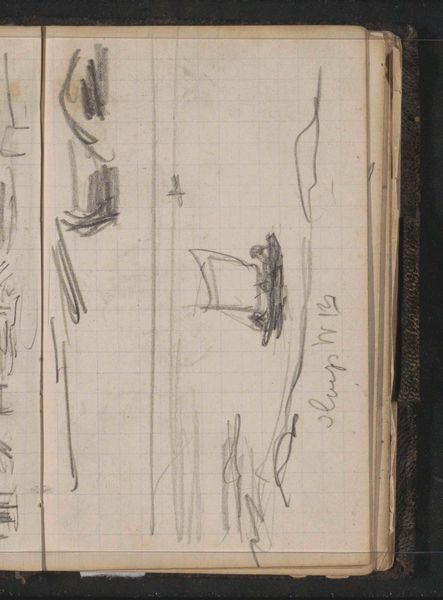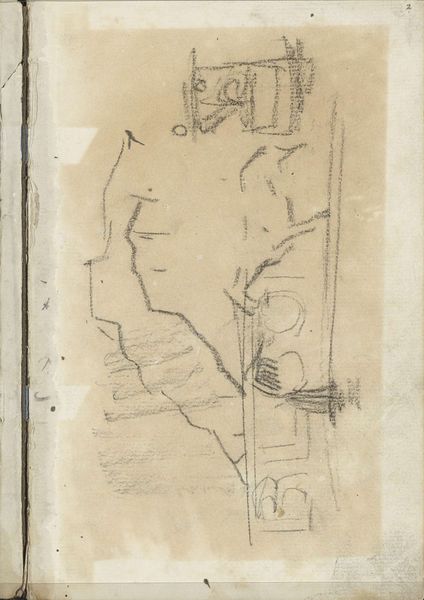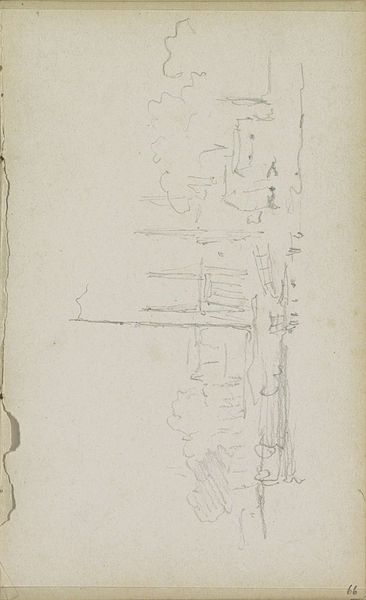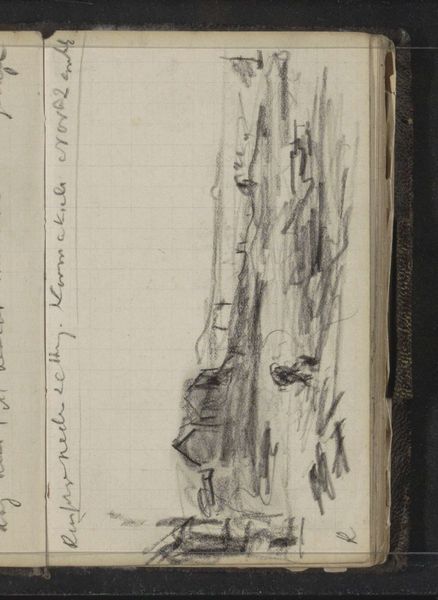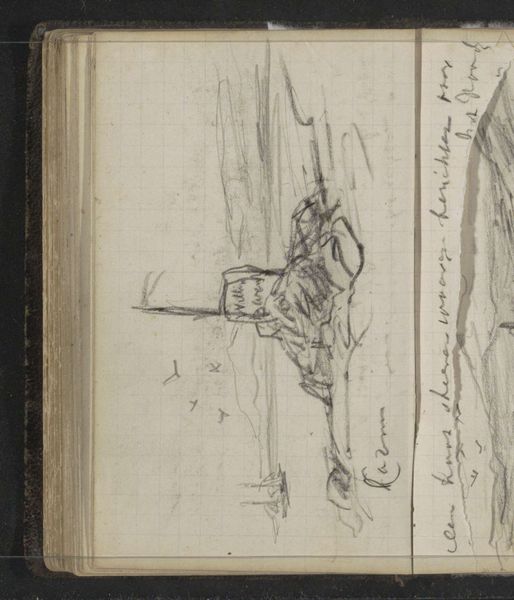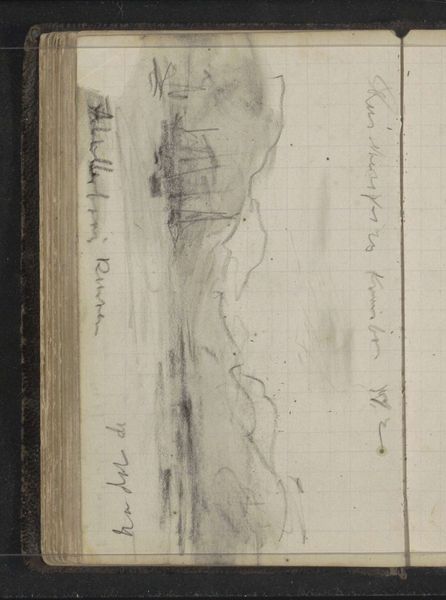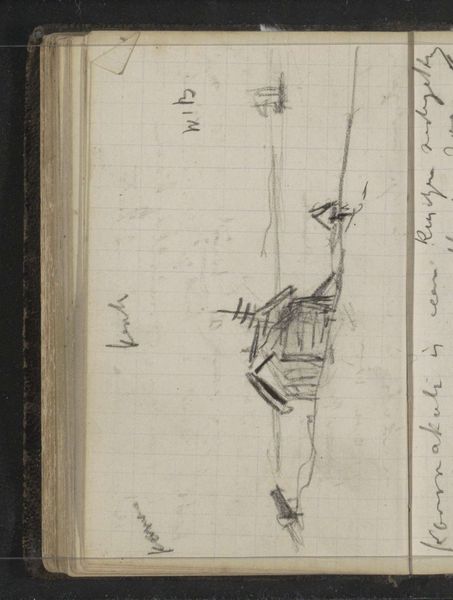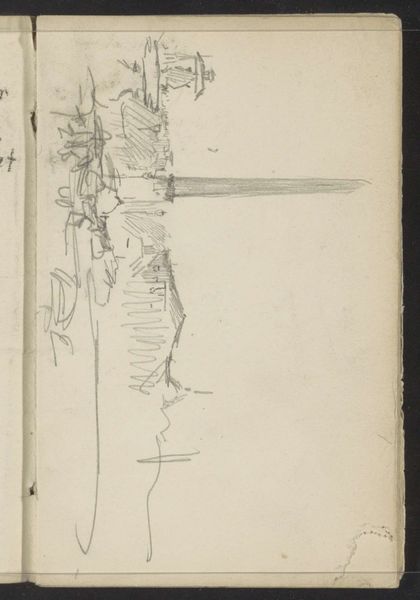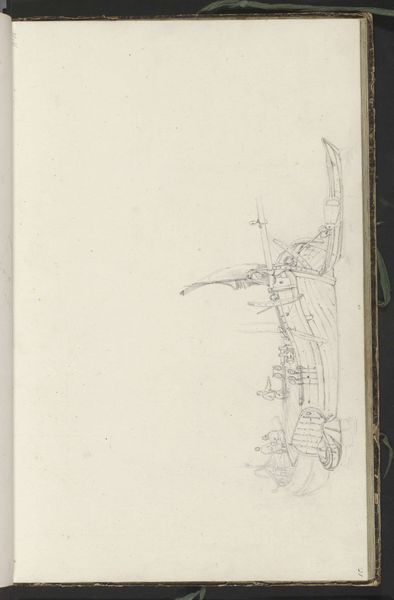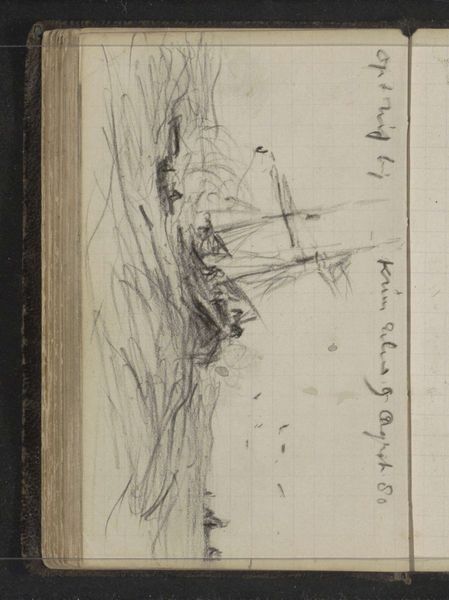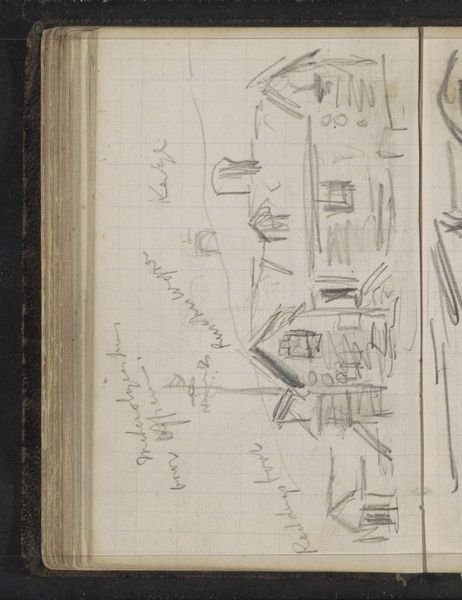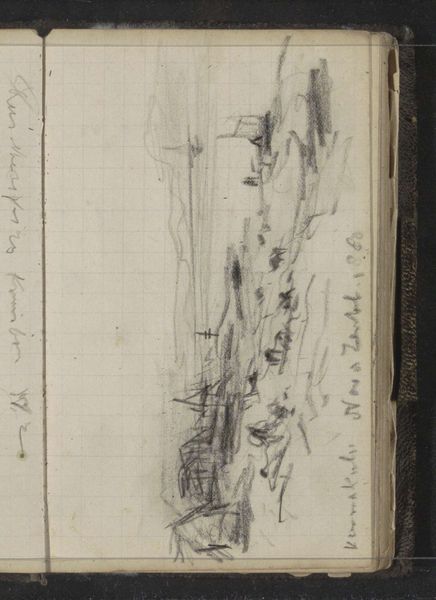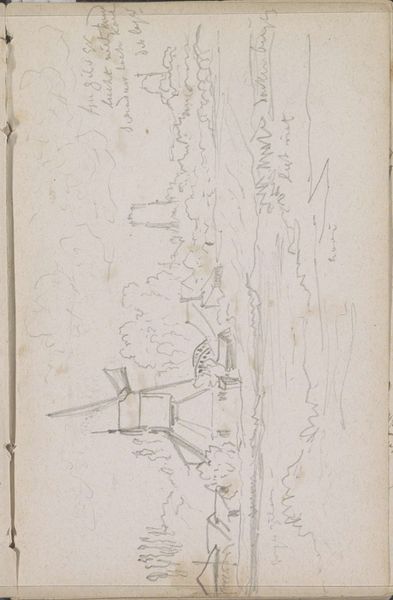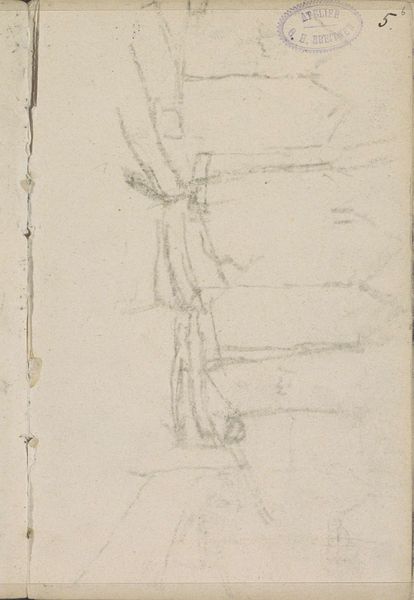
drawing, pencil
#
drawing
#
landscape
#
pencil
#
realism
Copyright: Rijks Museum: Open Domain
Curator: This drawing offers a glimpse into the artistry of Louis Apol. Created circa the 1880s, the pencil sketch, titled "Zeilschepen voor de kust van Hammerfest" or "Sailing Ships off the Coast of Hammerfest," is currently held at the Rijksmuseum. Editor: There’s a ghostly quality to this image, almost dreamlike. The delicate pencil strokes create a serene, but somewhat unsettling atmosphere. It really speaks of vastness. Curator: Indeed. Apol was known for his landscapes, especially winter scenes, and this sketch likely served as preparation for a larger painting. We can view this work in the context of increasing artistic interest in depicting northern landscapes, mirroring contemporary explorations. Artists capturing the starkness of these regions engaged with notions of discovery and national identity. Editor: For me, ships always evoke journeys, not just physical ones, but psychological passages. Their presence hints at trade, exploration, perhaps even a longing for something beyond the visible horizon. It's curious that in the almost absence of any colour, they possess symbolic weight. Curator: Considering the socio-political climate of the late 19th century, depictions of ships also became associated with maritime power and colonialism, although the calmness of this work could be interpreted as a deliberate distancing from any explicit assertion of dominance. The Rijksmuseum certainly gives it significance within the canon of Dutch art. Editor: I hadn’t considered the political implications, that gives me another avenue for approaching this piece. Thinking on it more, even as just a preparatory work, the delicate touch transmits such a complex image to us now. I am not even sure I got this from it at first. Curator: It is precisely this evocative nature that gives the piece such lasting power, even outside its original socio-political implications, no? Editor: I would completely agree with you! I can almost imagine the journey that I could take, just by studying those faint marks. Curator: Thank you! It really encourages another glance and appreciation for Apol's practice.
Comments
No comments
Be the first to comment and join the conversation on the ultimate creative platform.
